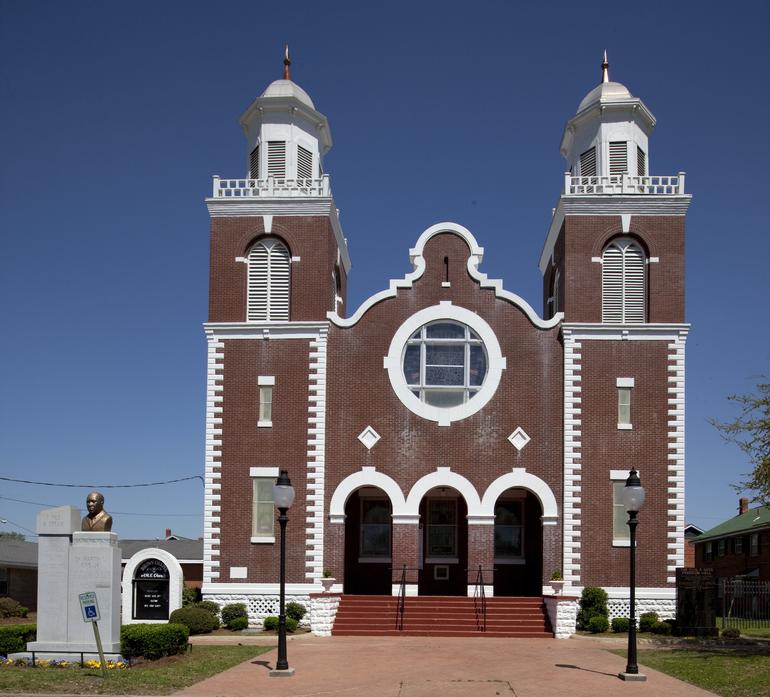
Brown Chapel AME Church
Selma, Alabama
Established in 1866 and joining the African Methodist Episcopal Denomination in 1868, this red brick structure is most closely associated with the Southern Christian Leadership Conference's 1965 Selma campaign to win equal access to the ballot for African American people. During that time, it served as the conference’s headquarters and as the site for rallies conducted by Dr. Martin Luther King, Jr. It is also where the Voting Rights March, the Bloody Sunday March, the Turn Around Tuesday March, and the Selma to Montgomery March began.
During the Civil Rights movement, Brown Chapel remained open after the State and Federal courts issued injunctions to prohibit mass meetings in Black churches, providing shelter to the movement during the storms of resistance to social and political change.


Dexter Avenue King Memorial Baptist Church
Montgomery, Alabama
Known for its years at the forefront of the Montgomery Bus Boycott and the Civil Rights movement, led by then-pastor Dr. Martin Luther King, Jr., Dexter Avenue King Memorial Baptist Church proved how members of a Black community could unite in resistance to segregation. It heralded a new era of "direct action."
Years before the boycott, Dexter Avenue minister Vernon Johns was an early change-seeker, sitting down in the whites-only section of a city bus. When the driver ordered him off, Johns urged other passengers to join him, thus instigating bus sit-ins that would propel the movement.

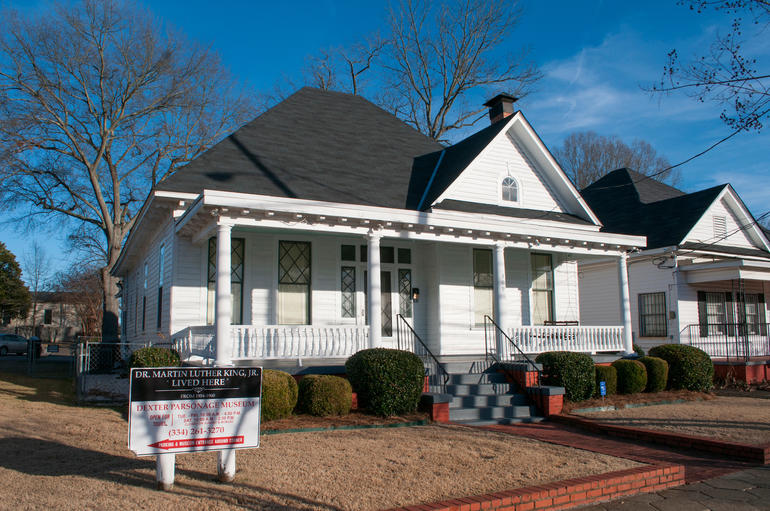
Dexter Avenue Church Parsonage
Montgomery, Alabama
This porticoed, clapboard house served as the home of Dr. King and his family during his ministry in Montgomery and his leadership of the Montgomery Bus Boycott.
On January 31, 1956, the parsonage was bombed, ripping a hole through the home and front steps and leaving a scar in the concrete still visible today. The bombing helped focus national attention on the movement in Montgomery and Dr. King's firm stand on non-violence.
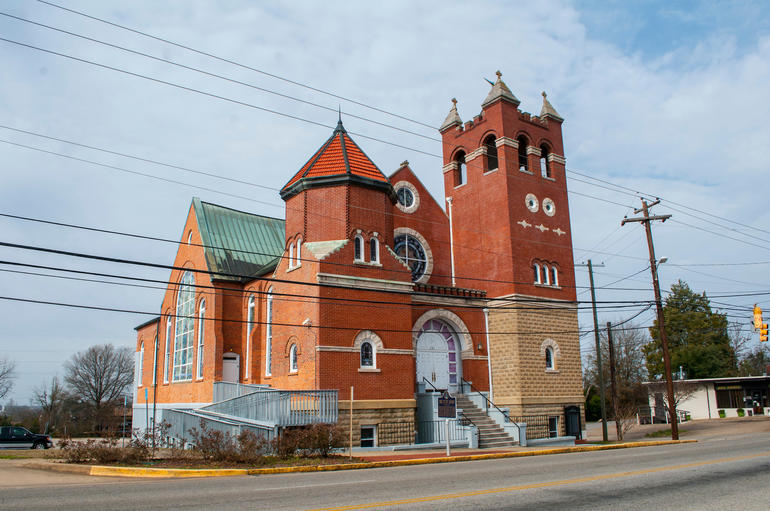
First Baptist Church
Montgomery, Alabama
First Baptist was founded in downtown Montgomery in 1867 as one of the first Black churches in the area, ultimately becoming one of the largest in the South. It was an important gathering place for activities related to the Civil Rights movement, and was led from 1952 to 1961 by Rev. Ralph Abernathy, Dr. King’s right hand.
In 1957, three weeks after the official end of the boycott, the church was bombed along with three others nearby. No one was hurt but the church was severely damaged.
The church was also the site of the "siege of First Baptist.” Following the arrival of Freedom Riders who had been met with violence at the Greyhound Bus Station in downtown Montgomery, the church was besieged by 3,000 whites who threatened to burn it. In the basement, Dr. King called Attorney General Robert F. Kennedy while bricks were thrown through the windows and tear gas drifted inside. The event played a crucial part in the desegregation of interstate travel.
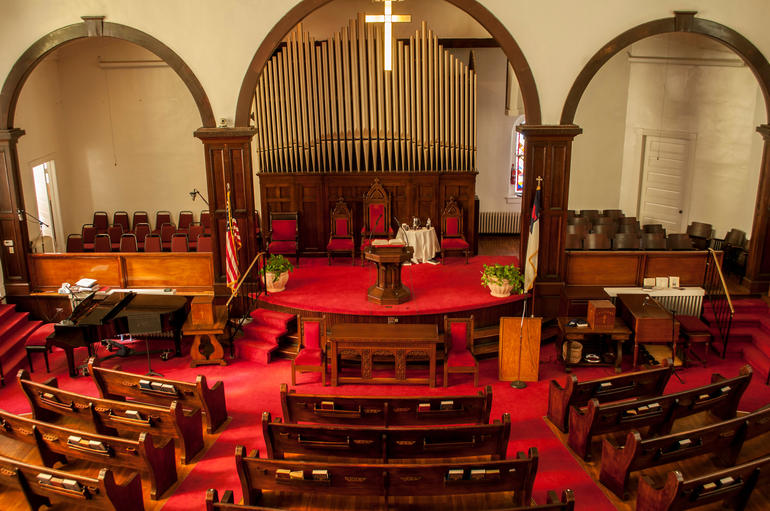

First Baptist Church
Selma, Alabama
The congregation of Selma’s First “Colored” Baptist Church was organized in the early 1840s by a freed slave, Samuel Phillips.
In 1963, under the leadership of Rev. M. C. Cleveland, Jr., the church became the first in the city to open its doors for activities and meetings of the Dallas County Voters League. During the next two years, the church was a focal point of the mass meeting and non-violent teaching sessions sponsored by the Student Nonviolent Coordinating Committee, which supported the Selma to Montgomery March.
During the early months of 1965, Dr. Martin Luther King, Jr., Ralph Abernathy, and other leaders of the Southern Christian Leadership Conference spoke many nights in the church to the students gathered for the movement.
After the Selma to Montgomery March, First Baptist continued to headquarter the Student Nonviolent Coordinating Committee and served as a distribution center for food and clothing for those who had lost their jobs.

Mt. Zion AME Zion Church
Montgomery, Alabama
From 1948 to 1952, Rev. Solomon Seay of Mt. Zion led the Black community in early protests as president of the Negro Civic and Improvement League.
Later, on the first full day of the bus boycott, Rev. Roy Bennett hosted a community leadership meeting in the church, resulting in the creation of the Montgomery Improvement Association (MIA) and the election of Dr. King to his first official leadership role in the Civil Rights movement as its president.
During the Selma to Montgomery March in 1965, marchers rested at the church on their way to the capitol. Rev. Percy Smith, Jr., who led the church at the time of the march, became the first black man to run for mayor of Montgomery.
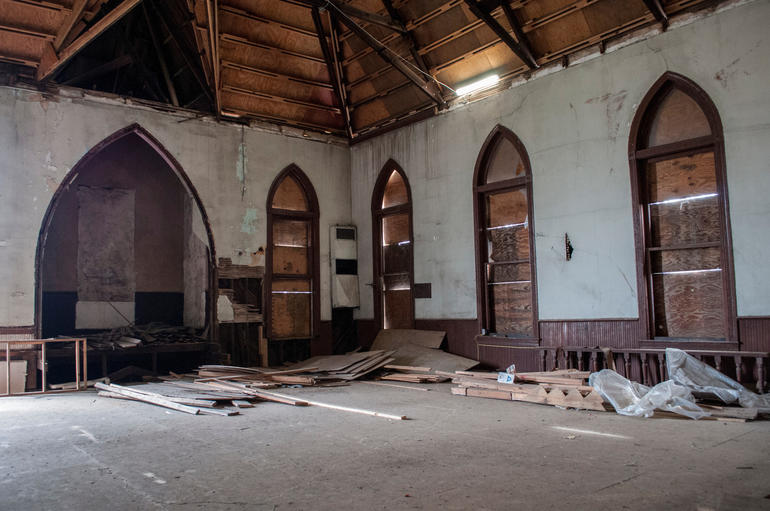
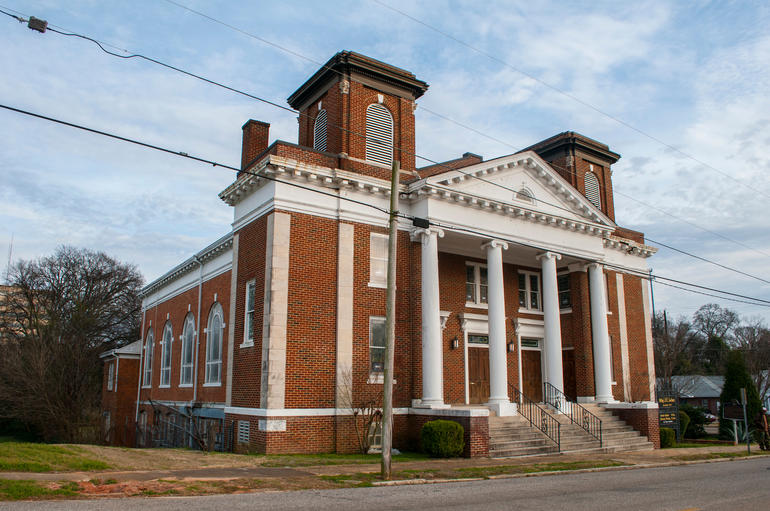
Old Ship AME Zion Church
Montgomery, Alabama
Established in 1852, Old Ship is home to the oldest Black congregation in Montgomery, Alabama, and is a center of cultural and religious life for the Black community throughout the state.
The church played a key role in the decision to move State Normal, one of the oldest Historically Black Colleges & Universities in the United States, from Marion to Montgomery, Alabama. Later, its name was changed to Alabama State University, and its first graduation ceremonies were held at Old Ship. Speakers from its pulpit have included The Honorable Frederick Douglas and President William McKinley.
During the Civil Rights movement, important organizational meetings were held in the church.

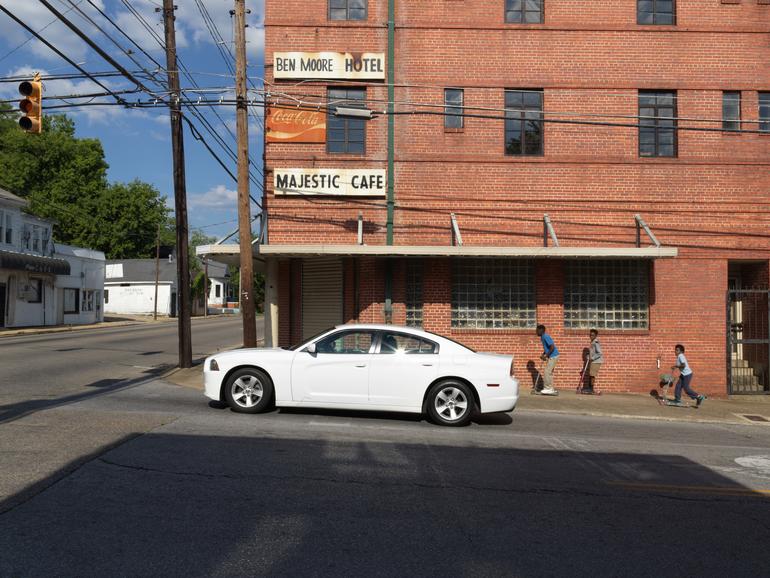
Ben Moore Hotel
Montgomery, Alabama
The Ben Moore Hotel was built in 1951 and opened its doors to African Americans in 1952. It would become the site of historic meetings between representatives of the Black and White populations of Montgomery during the dawn of the Civil Rights era.
The four-story Ben Moore Hotel offered lodging, a safe place for meetings, and a vibrant social life free from the bigotry and hostilities of the racism of the 1950s and '60s.
An evocative barbershop remains in its basement, full of Civil Rights-era news clippings, pictures, and portraits, including one of its most famous customers, the Dr. Martin Luther King, Jr. The Dexter Avenue Church Parsonage, where he lived for many years, is just yards away.
Today, except for the barbershop, the hotel is vacant.
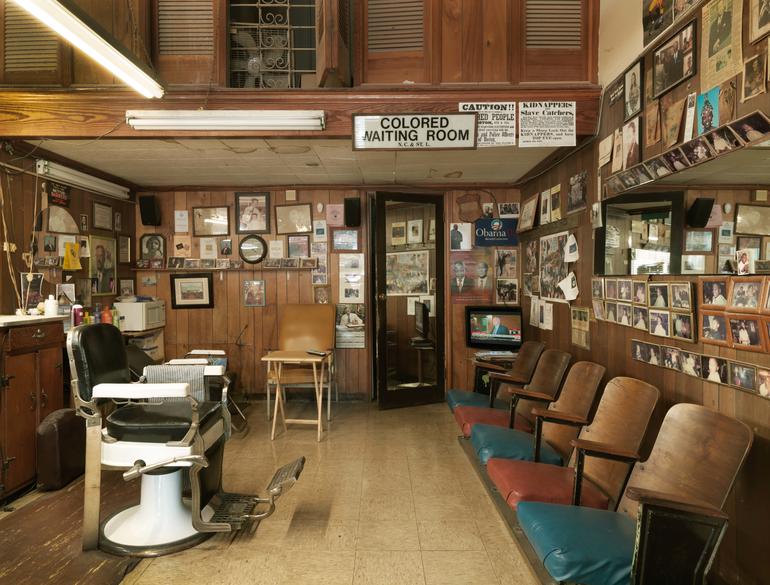

Dr. Richard H. Harris, Jr. House
Montgomery, Alabama
This house, originally constructed at the turn of the century, was the home of Dr. Richard H. Harris Jr and his family. In May 1961, Dr. Harris opened this home to 33 Freedom Riders challenging interstate bus segregation who were harassed and attacked at the Montgomery Greyhound Bus Station upon arrival.
In the days following the attack, Harris' home served as a haven for the Freedom Riders while martial law was declared in the area. Dr. King, Rev. Ralph D. Abernathy, James Farmer, John Lewis, Diane Nash, and other leaders of the Civil Rights movement met at the Harris House to develop a strategy for continuing the rides.
On May 24, after solemn prayer, the Freedom Riders were escorted from the Harris House by the National Guard to the Greyhound Bus Station to continue their mission to Jackson, Mississippi.
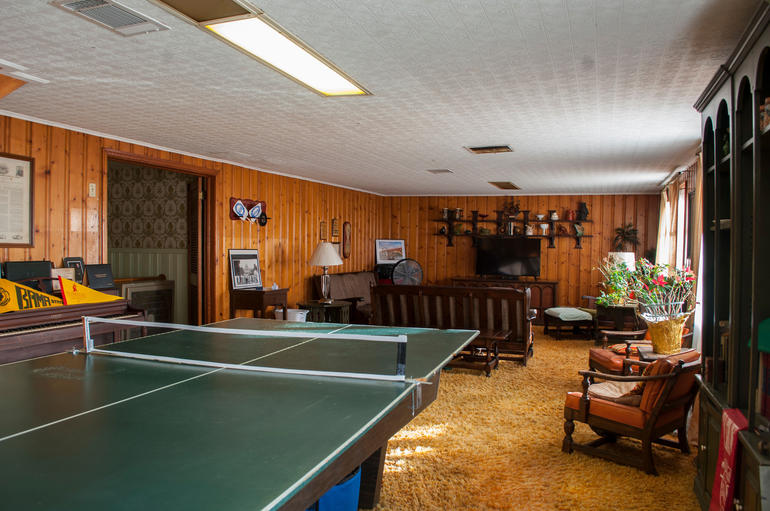
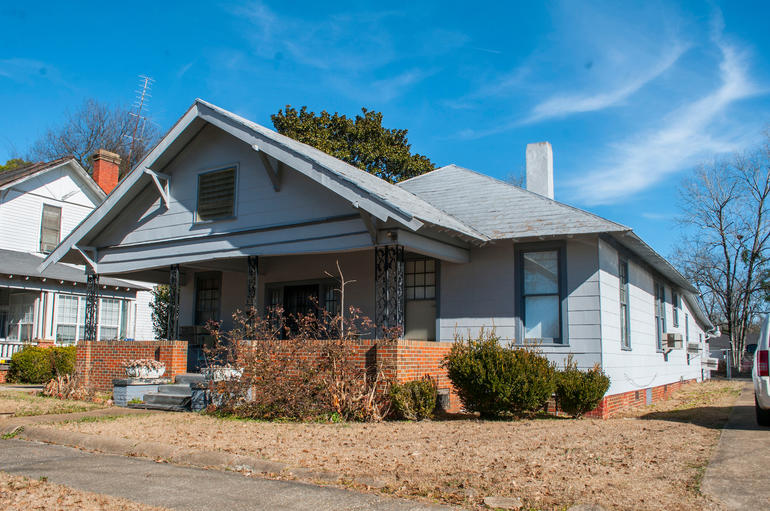
Sullivan and Richie Jean Sherrod Jackson Museum
Selma, Alabama
In early 1965, this house was the location of the strategy meetings following the shooting death of Jimmy Lee Jackson that led to the Selma to Montgomery March.
The most significant of those meetings may have been with Assistant Attorney General John Doar in March 1965, just two days after Bloody Sunday, during which dozens of nonviolent protestors were attacked and sent to the hospital while trying to cross the Edmund Pettus Bridge. This meeting led to Turnaround Tuesday, a second march across the bridge.
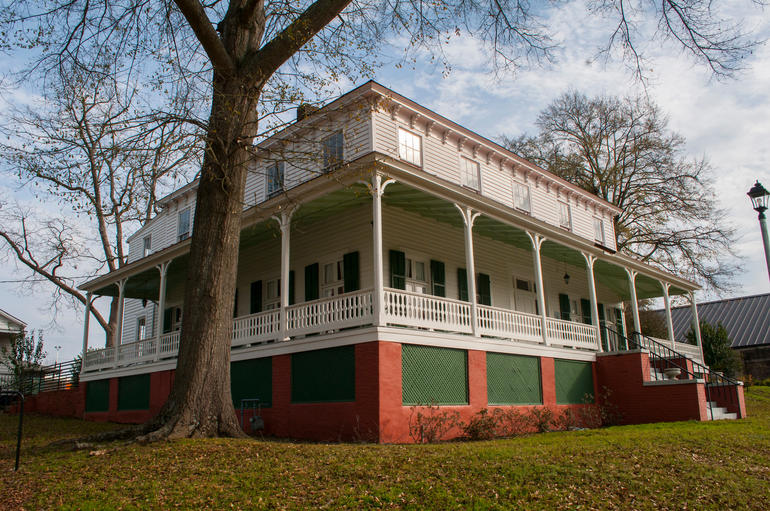
Jackson Community House and Museum
Montgomery, Alabama
In 1943, the Montgomery City Federation of Colored Women's Clubs purchased this residence for its 25 adult clubs and 15 youth clubs.
The federation was associated with a series of groups all promoting positive citizenship on both race and gender fronts. They formed an invaluable gathering place for Black women using the Community House. It functioned as a Girl Scout headquarters, a popular teenage meeting place, an adult social and civic center, and beginning in December 1948, the city's first library open to African Americans.
The building also hosted meetings of the Women's Political Council, which helped initiate the Montgomery Bus Boycott; a "Stork's Nest" for needy mothers; a Head Start kindergarten; voter registration; youth leadership training; tutorial and counseling programs for at-risk youth; family reunions, receptions, and weddings.
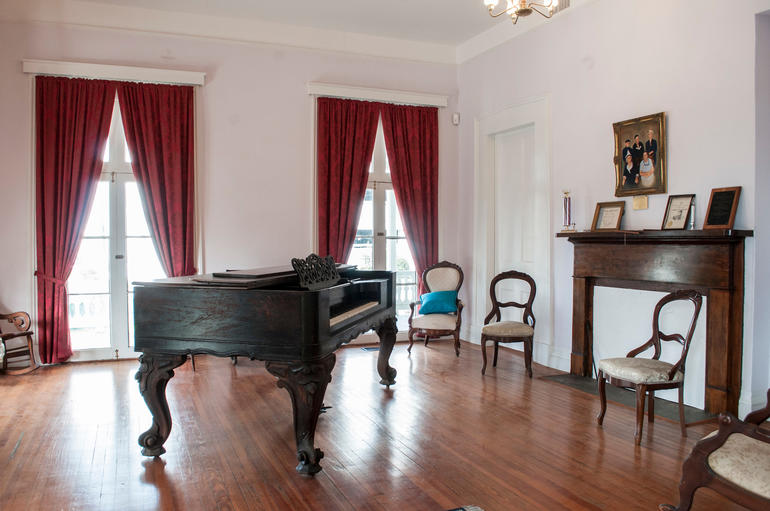
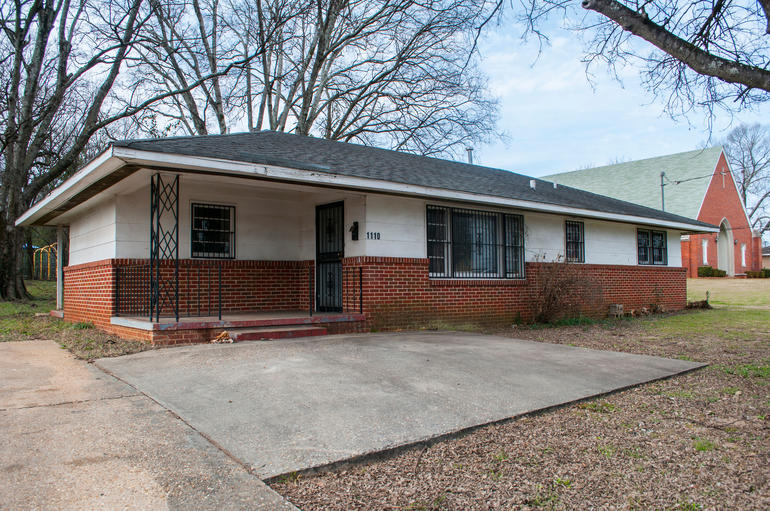
Trinity Lutheran Church Parsonage
Montgomery, Alabama
This home was the church residence of Robert S. Graetz, a white Lutheran clergyman who pastored the Black congregation of Trinity Lutheran, placing him in the midst of community hostility the year of the Montgomery Bus Boycott.
Graetz openly supported the Montgomery Bus Boycott. He formally joined the movement, becoming secretary of the Montgomery Improvement Association and frequently attending meetings led by Dr. King.
He and his family were regularly targeted by the Ku Klux Klan. Graetz had his tires slashed, his car booby-trapped, and was arrested on false charges. His church residence was bombed three times; the largest bomb, which failed to explode, would have killed the Graetz family and leveled much of the block.
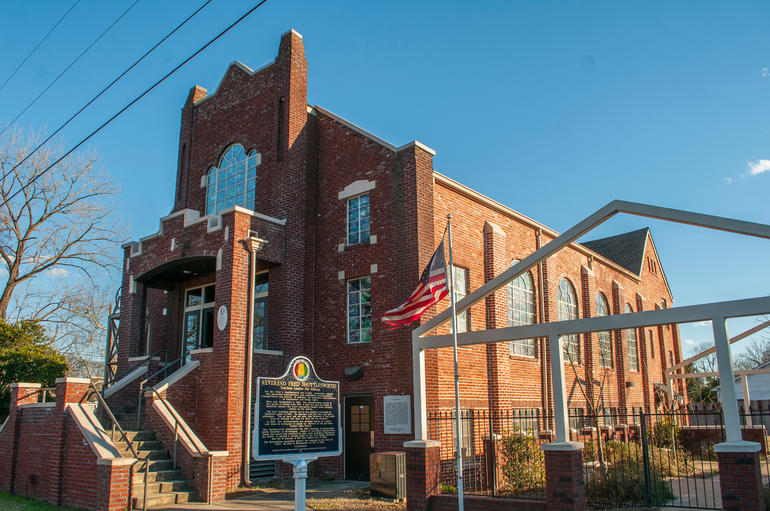
Historic Bethel Baptist Church
Birmingham, Alabama
Historic Bethel Baptist Church served as headquarters for the Alabama Christian Movement for Human Rights (ACMHR), which applied both legal and nonviolent direct action against segregation. During that time, the church was pastored by Rev. Fred L. Shuttlesworth, a leader of the Birmingham Civil Rights movement. Bethel Baptist was also a key location during the 1961 Freedom Ride, and was the designated point of contact for the group in Alabama. Shuttlesworth worked with other movement leadership and the Kennedy administration to strategize moving the rides forward.
The church and its parsonage were bombed three times during the height of the Civil Rights movement, including Christmas Day, 1956.

Old Sardis Baptist Church
Birmingham, Alabama
Old Sardis Baptist Church was organized in 1884 and rebuilt in its current form in 1925. Rev. Robert L. Alford became pastor in 1947, and the church hosted meetings to organize the Alabama Christian Movement for Human Rights (ACMHR), of which he was co-founder.
Old Sardis is located in the Smithfield community dubbed "Dynamite Hill" because of the frequency of racially motivated bombings that occurred in the area as Black middle class moved into the previously all-White neighborhood in the 1960s.
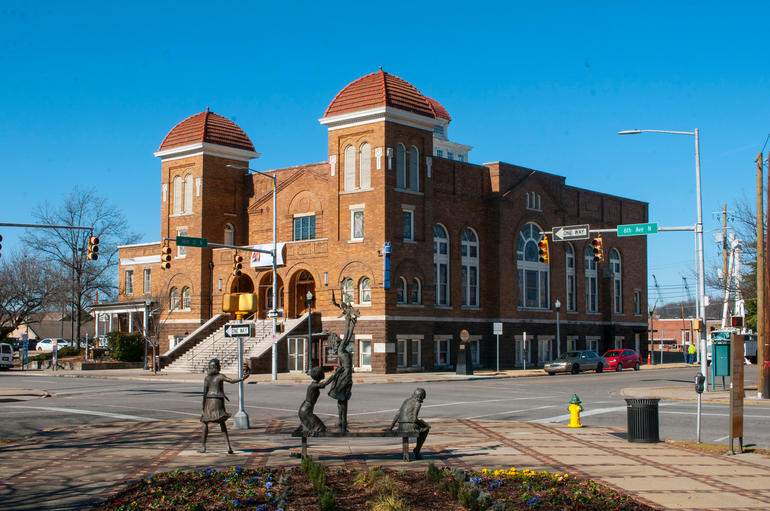
Sixteenth Street Baptist Church
Birmingham, Alabama
Sixteenth Street was originally organized in 1873 as the First Colored Baptist Church. Its current structure was erected in 1911. Sixteenth Street was known as “everybody’s church” because of its role as a center for educational and intellectual activities. During the Civil Rights movement, the church hosted many mass meetings and trainings in nonviolent civil disobedience. In May 1963, the church was the staging site for Project C, the Birmingham campaign where hundreds of young, peaceful protestors were jailed following confrontation with police using dogs and fire hoses.
On September 15, 1963, members of the Ku Klux Klan planted a bomb at the church that exploded just after Sunday services, killing four young girls and generating international outrage that provided the impetus for passage of the Civil Rights Act of 1964.
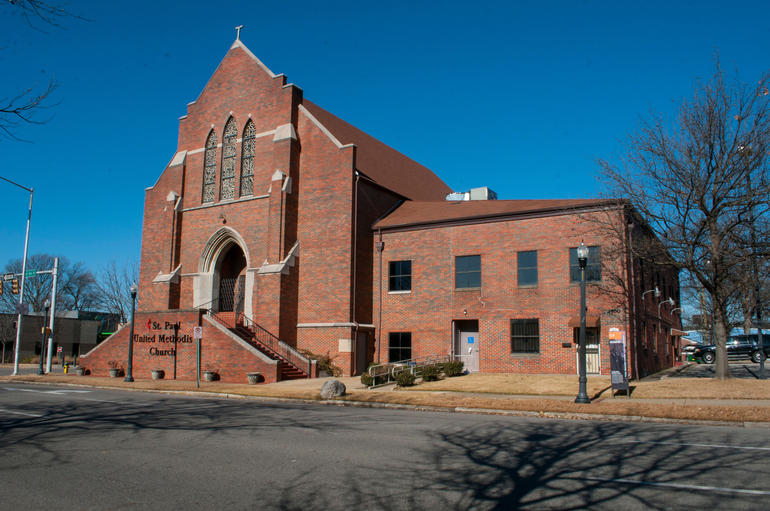
St. Paul United Methodist Church
Birmingham, Alabama
Founded in 1896, St. Paul is one of the oldest African-American churches in Birmingham. Its current building was erected in 1904. In 1956, St. Paul was the site of one of the earliest meetings in Birmingham following the direct action campaign to integrate the city’s buses. During the demonstrations of 1963, 1963, it hosted mass meetings as well as held trainings in nonviolent civil disobedience for the young demonstrators.

The Ballard House
Birmingham, Alabama
This house was built in the 1940s by African-American contractor Leroy S. Gillard for Dr. Edward H. Ballard, a Black pediatrician and obstetrician. After it was sold in the 1950s, Ballard House rented its rooms as business space and lodging, and operated a restaurant frequented by the Birmingham Black Barons.
Dr. Herschell Hamilton Sr. moved his medical practice to Ballard House in 1959. It was there that he also hosted meetings of Civil Rights organizers and treated victims of violence that occurred when police dogs and fire hoses were used against marchers in 1963.


Tabernacle Baptist Church
Selma, Alabama
Tabernacle Baptist was organized in 1885 for Selma University students. The church’s ministers were leaders in African-American Baptist organizations, including Rev. D. V. Jemison, who served as president of the National Baptist Convention. Its ministers and congregation were also active in the Civil Rights movement; Pastor John D. Hunter and Marie Foster were two of the “Courageous Eight,” the steering committee for the Dallas County Voters League who invited Dr. King to Selma in 1964.
Tabernacle Baptist is also locally significant for its Classical Revival design, executed by African American architect David T. West, a congregation member, in 1922.


Jackson SNCC House
White Hall, Alabama
This simple white structure was an empty house when its owners – Mathew and Emma Jackson – loaned it to the Student Nonviolent Coordinating Committee (SNCC) as a “safe place” for meetings, meals, housing, support, and protection for its workers organizing in Lowndes County, Alabama. Because of their association with the movement, the house was riddled with rifle bullets during an attack by a gang of white men.
The Jackson family’s involvement in the Civil Rights movement demonstrated the power of personal community ties to take organizing efforts forward.
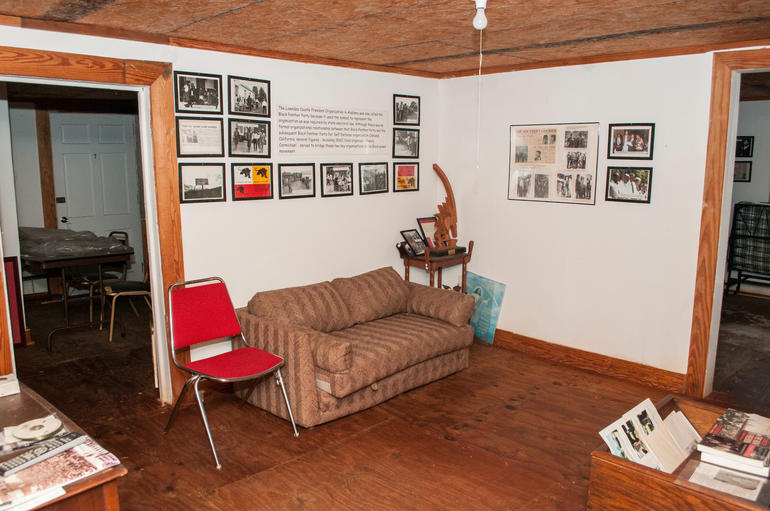
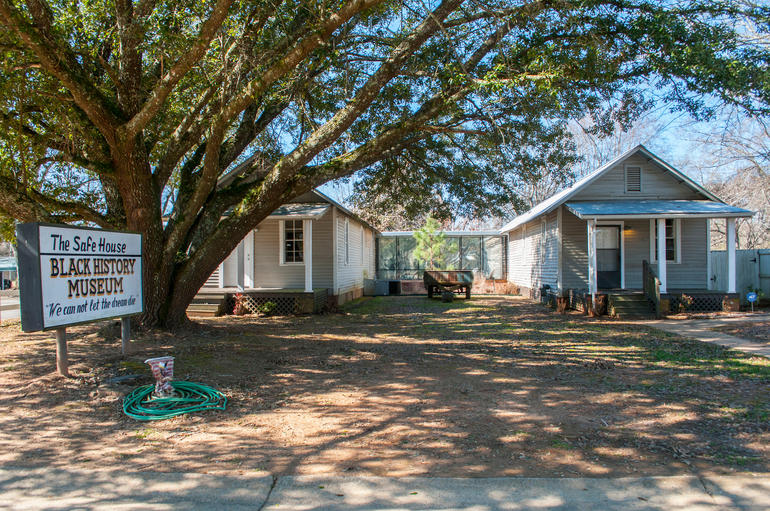
Safe House Black History Museum
Greensboro, Alabama
This small, shotgun style home was owned by the Burroughs, a family of Civil Rights activists. They opened it up as a refuge for Dr. Martin Luther King, Jr. in March 1968 when an angry mob of Ku Klux Klan members attempted to murder him after a speech in Greensboro, Alabama. Just two weeks later, Dr. King would be assassinated in Memphis, Tennessee.
Today the house operates as a museum, documenting the struggle for equality at the local level through artifacts, photographs, and living history; its director Ms. Theresa Burroughs, is part of the original family who shielded Dr. King fifty years ago.

Protecting and supporting these important sites will help ensure that their stories of courage, freedom, and equality can inspire generations to come.
Our work at the Alabama Civil Rights Sites is possible thanks to support from Jack Shear and a gift from an anonymous donor.
